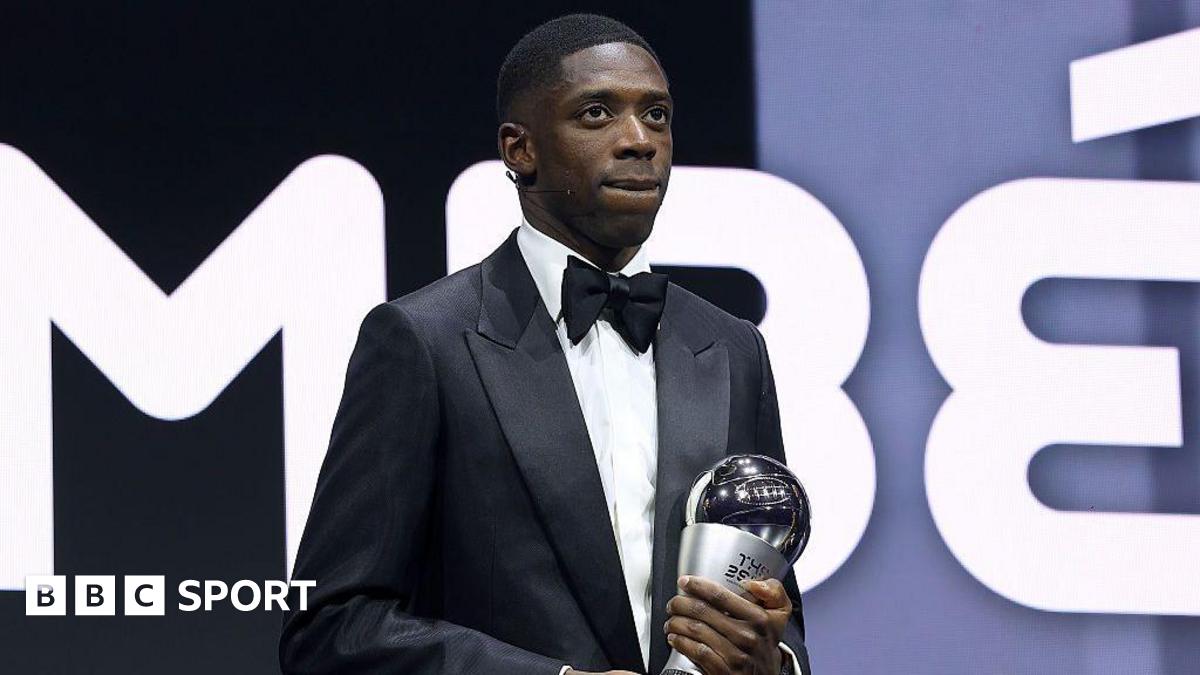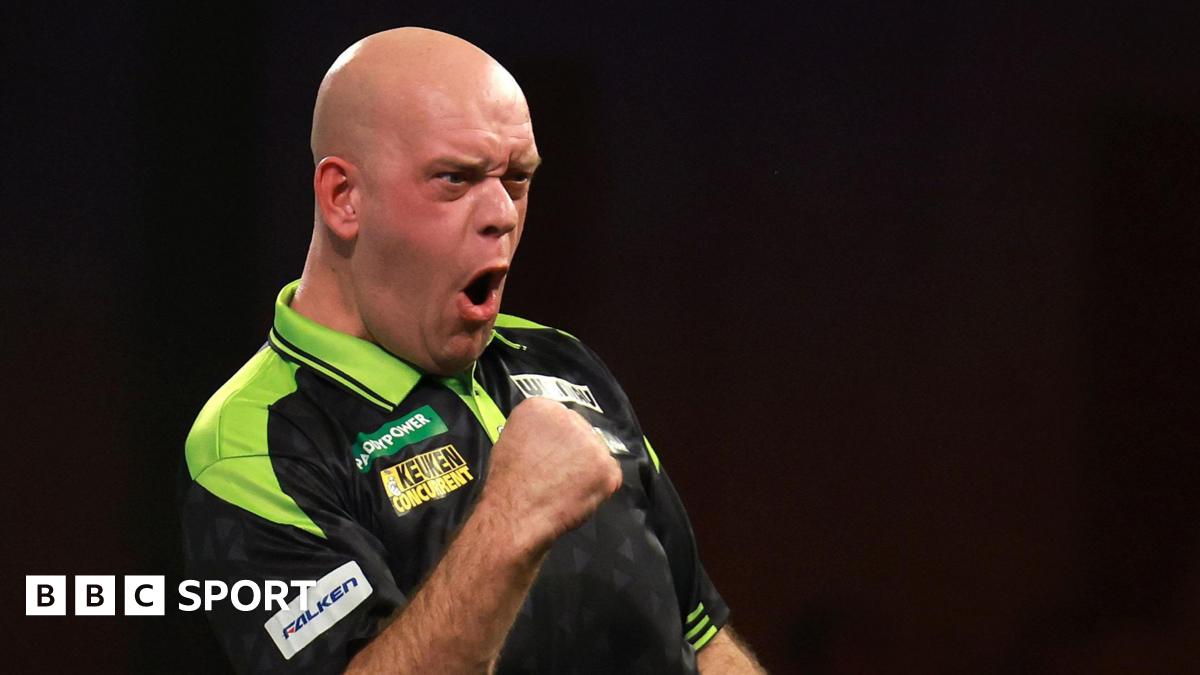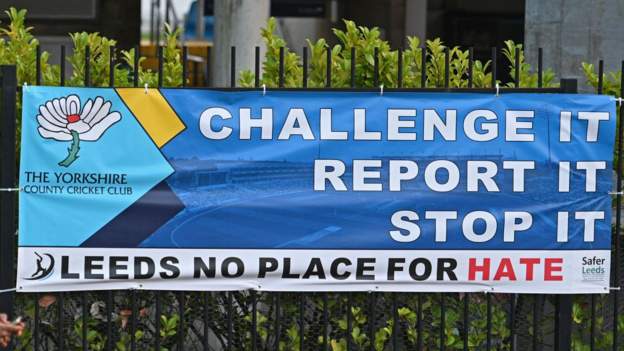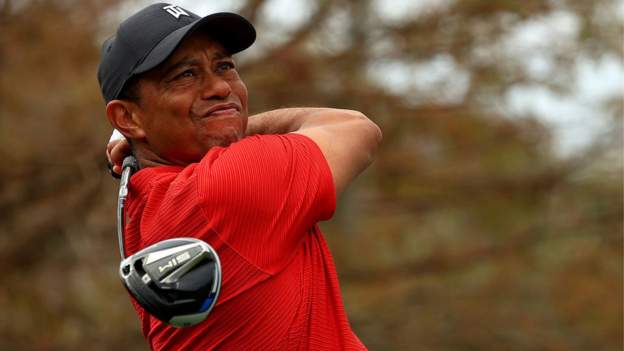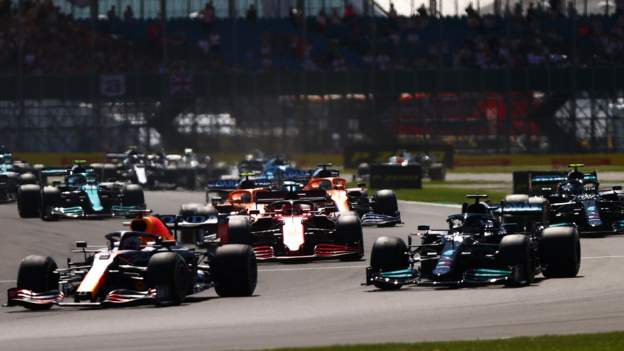Azeem Rafiq’s testimony on racism in cricket has led to a period of soul-searching within the sport – which England and Wales Cricket Board (ECB) chief executive Tom Harrison says must now create a “sense of belonging” for everyone.
Rafiq’s evidence has inevitably led to a specific focus on the experiences and progression of South Asians in cricket.
One of the ECB’s attempts to tackle the known problem of under-representation of this group of players in the professional game was the South Asian Action Plan (SAAP), launched in 2018.
The ECB said there were approximately one million South Asian cricket fans across England and Wales – but the ambition of the plan was to get more of them playing, supporting and getting involved in the sport.
However, while some in the game see it as simply a “box-ticking exercise”, is this a genuine base to build from for the future? And how much progress been made in the three years since its launch?
BBC Sport assess the statistics to see what has changed, while also hearing what people think about the SAAP’s success or otherwise.
What are the key statistics?
One statistic repeatedly quoted in recent days – by Rafiq and others to highlight the issue of diversity in the game – is that, while around a third of recreational cricketers are South Asian, this drops to just 4% of those who play cricket professionally.
Here is a bit more detail on those numbers.
In 2018, South Asian players represented
- 30% of recreational players,
- 15% of county age-group players,
- 11% of county academy players and
- 4% of first-class county players.
Since then, the proportion of recreational players who are South Asian has dropped to 28%. Meanwhile, at present, 33% of recreational players are from an ethnically diverse background.
In response to questions from BBC Sport, the ECB says it had “begun” to see an increase in South Asian players within the county academy systems, from 11% in 2018 up to 17% in 2019-20.
And it said around 10% of first-class county players are from ethnically diverse backgrounds.
The PCA said its latest membership survey showed 13.44% of contracted men’s professional players in county cricket throughout the 2021 season were from ethnically diverse backgrounds and 5.17% of contracted professional players in the women’s game.
However, neither organisation was able to provide an up-to-date figure for South Asian representation in the professional game.
Why was the plan launched?
The rationale for the action plan was to address a perceived disconnect that cricket had with the South Asian community.
The ECB’s chief executive Tom Harrison said at the time: “While we’ve long acknowledged the passion for the game in South Asian communities in the UK and had the best intentions, we have never fully understood how to engage with South Asian communities. This report gives us a road map to change that.”
New Yorkshire chairman Lord Patel helped launch the plan as a senior independent director of the ECB.
He also added at the time: “The passion South Asian communities in the UK have for cricket remains high but, over 50 years later, there is still so much untapped potential. This plan will help to change that – starting today.”
He called it a once-in-a-generation opportunity to engage Asian communities, focusing on four ambitions.
- Create more opportunities for South Asian communities to engage with cricket, whether playing, supporting or working in the game
- Remove the barriers to involvement and participation in cricket for South Asian players and fans
- Build strong relationships between South Asian communities, the ECB, counties, clubs and the cricket network
- Use cricket to make a positive difference to communities
An 11-point action plan was drawn up covering facilities, formats, children and schools, women and girls, talent identification, development and retention, financial support, elite coaching, matchday experience, communication and the cricket workforce.
Here’s more on some of those areas:
Talent identification and retention
The research that was done to inform the South Asian Action Plan found 50% of respondents felt more ‘scouts’ were needed to watch non-traditional cricket environments, such as park leagues.
The ECB said it has started piloting a “Community Talent Champions” programme in collaboration with the National Asian Cricket Council.
Three counties – Yorkshire, Lancashire and Leicestershire – have taken part in the pilot.
The ECB told BBC Sport: “Five Community Talent Champions have been recruited across the three counties to test new ways to spot England stars of the future – by identifying and developing players of potential from diverse and non-traditional cricketing pathways and who may not have the opportunity to be seen in the traditional clubs and league structures. Our plans are to expand to other cities and regions based on the learnings from the pilots.”
In addition, it said the County Partnership Agreement requires all first-class counties to establish a scouting system to support identification of players into the pathway. A new talent development framework has also recently been launched for the boys’ and girls’ game and the T20 City Cup has been refocused to act as an identification tool for young people from urban areas.
Facilities
Research found the single biggest barrier to South Asian participation is access to facilities in urban areas.
The ECB set a short-term ambition for 2018 and 2019 of creating between one and three Urban Cricket Centres, installing 100 non-turf pitches in urban areas and installing or upgrading 25 turf pitches in urban areas.
In Yorkshire, planning permission has been granted for an urban hub to be built in Bradford at Parkside Sports Centre in West Bowling, which is due to open during summer 2022.
By 2024, the ambition is to create 20 Urban Cricket Centres, install 1,000 non-turf pitches and install or upgrade 100 turf pitches by 2024.
Coaching
In 2018, less than 5% of the coaching staff at first-class counties were South Asian, with the ECB unable to provide the latest data for that.
The ECB said a lot of work was being undertaken to support more coaches from South Asian and other ethnically diverse backgrounds to achieve their Advanced and Specialist level qualifications through bursaries and mentoring programmes.
It added “28% of our latest Specialist (level 4) course and 21% of our Advanced (level 3) intakes were from an ethnically diverse background”, in addition to mentoring and education programmes.
Anti-discrimination work
Unconscious bias training was delivered to all county academy staff in 2018 and 2019.
In collaboration with the PCA, an anti-racism education programme was delivered to professional cricketers, academy players, coaches and support staff during 2021.
The ECB said a “further tranche of training is being developed with the PCA to test application of learning”.
Cricket workforce
In 2018, less than 10% of the cricket workforce was of South Asian origin and one first-class county chief executive of South Asian origin.
The Rooney Rule was introduced for ECB coaching appointments, and bursaries and scholarships have been introduced to support coach development.
The ECB’s own workforce is 7% South Asian, up from 3% in 2017-18.
The governing body said it is undertaking “a game-wide census to understand the demographics of the cricket workforce”, and will have updated information at the start of 2022.
A new County Governance Code is also being implemented to “ensure an appropriate representation of under-represented communities in decision-making positions across the First-Class & Recreational game”.
What do those in cricket say?
Ijaz Khan, a cricket coach from Bradford, told BBC Sport: “I’m going to be brutally honest, I think it’s a talking shop, it’s a box-ticking exercise, that’s my experience of it.”
Khan, who recently attended a meeting about the action plan, said: “I’ve been to open workshops and we talk about stuff, we seem to talk about the same stuff 12 months on, and 12 months on there’s no progress, I can’t even say it’s one step forward, two steps back, I think it’s a bit tokenistic.”
Vikram Banerjee, the ECB’s head of strategy, who is leading the South Asian Action Plan, told the BBC’s Sports Desk Podcast: “The last couple of weeks have highlighted some really uncomfortable truths about where cricket is today and the length of the work and the journey that we have to go on.
“There are some really good people in cricket and all sports doing some really good work in this space. That shouldn’t be forgotten.
“While the next couple of weeks, months will be uncomfortable, one way I’m looking at it is there is a real opportunity. The silver lining is there is an opportunity for us, as a sport, to use the power that sport has to really accelerate this, learn from it.”
Former West Indies bowler Tino Best, who played for Yorkshire and Hampshire, told BBC Sport more work across the board is needed to improve diversity.
“The mere fact is how many black players do you see in county cricket? You hardly see any,” he said. “There are so many stories of black cricketers in England that have suffered.
“I think the ECB needs to go back to those neighbourhoods in Brixton, in Croydon and those players and make the game more inclusive and understand it is not a boys’ club. Cricket has gone past the days of being an institution of high school boys who are the only ones who play cricket, and boys from low demographic ought to play football and so forth.”
Last week, representatives from the ECB, the Professional Cricketers’ Association, Marylebone Cricket Club, the National Counties Cricket Association and the First-Class and Recreational County Cricket network committed to “tangible action” to make cricket “more open and inclusive and ensuring effective governance”, following the testimonies of Rafiq and other victims of racism.
Harrison was asked what made this action plan – which is set to cover 12 areas – different to previous ones.
“I think the proof will be in how we deliver it. This will be the first time the game has come together to take such urgent and direct action,” he replied.
These latest plans will be added to the 11-point South Asian Action Plan, which set long-term ambitions up to 2024, and the six priorities from the Inspiring Generations strategy, which was launched in 2019 to “grow cricket in England and Wales between 2020-24”.
But Harrison said what has happened in the last few weeks “clearly demonstrates the distance we need to travel to make cricket truly the inclusive sport we want it to be”.
English cricket’s racism crisis has led to fresh ambitions by the game to better reflect the wider society, but it has also prompted heightened scrutiny over how effective its existing plans to improve inclusivity and diversity have been.



